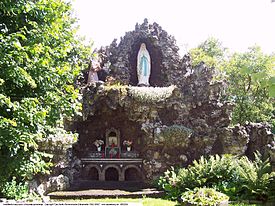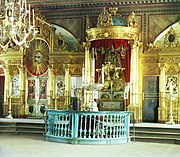Finally got around to cutting the sheets of metal for Pentecost.
Finalmente llegamos a cortar las hojas de metal para el Pentecost.Colours for Pentecost
Gwangju Folly
Gwangju Folly II
Since the mid-17th century, in literature and in architecture, the folly has been employed as a detour into delirium: nonetheless, a critical medium, oscillating between aesthetic autonomy and social-political potential. As a spatial intervention, the folly can be understood as a rupture, a strategic site questioning the constraints of norms. Gwangju Folly II director Nikolaus Hirsch and curators Philipp Misselwitz and Eui Young Chun have developed a curatorial approach that exploits the ambiguities of a folly as a critical tool of inquiry to address the condition of public space. Since the May 18, 1980 Democratic Uprising, the negotiation of public space in Gwangju has played a crucial role in the political transformation of South Korea—it has even come to signify a model for effective political mobilization. Contextualizing the potential of spatial interventions, the eight newly commissioned follies here seek to test the constitution of public space today—in contemporary Gwangju as well as in the global context.
Architect David Adjaye and writer Taiye Selasi have developed a folly called the Gwangju River Reading Room. It is positioned on the embankment of the Gwangju River, connecting the street level above with the grassy flood planes used as a seasonal park. The structure draws inspiration from traditional Korean pavilions and houses a "human rights" library of 200 books from Chimamanda Ngozi Adichie´s Half of a Yellow Sun to Emile Zola's Germinal.
Inspired by the function, economics, and history of Gwangju's pojangmachas, Ai Weiwei´s Cubic Meter Food Cart reflects on the role these "tented wagons" to instigate a discussion about public space: how does the city reconcile restricting these small, temporary, and useful structures while allowing the construction of massive permanent buildings?
As winners of an open competition for emerging Korean architects, Seok-hong Go and Mihee Kim's Memory Box appropriates an existing system of public lockers. The doors, however, have been replaced with transparent fronts so that citizens are invited to store and display private objects and memorabilia on public view. Architect Rem Koolhaas and writer Ingo Niermann address public participation in terms of The Vote. Their folly is positioned in the middle of a busy shopping and entertainment district that is mainly frequented by teenagers. The street has been divided into three pedestrian lanes marked "Yes," "No," and "Maybe." Votes are counted via a digital system and tallies are placed online to create a new form of direct plebiscite.
Delhi-based artist collective Raqs Media Collective´s folly have transformed a train of the Gwangju Metro into the Autodidact's Transport. The artists have undertaken a conceptual re-invocation of Erasmus´s In Praise of the Folly (1668) on the Gwangju Metro as a way of extending the Folly project beyond the frame of static presence in built spaces.
An itinerant structure, the Korean artist Do Ho Suh and Suh Architects's In-between Hotel is both strange and familiar. It slips through the fabric of Gwangju's public identity: a temporary dwelling unit activating aspects of Gwangju that have eluded the grand narratives.
Danish artist group Superflex´s Power Toilets address the inclusion of Gwangju into the UNESCO Memory of the World Register. Superflex have replaced a run-down public toilet in Gwangju with a new toilet which—in its interior—is an exact copy of the exclusive toilet used by the Executive Board of the UNESCO headquarters in Paris. While maintaining the semblance of a normal public toilet, the structure also engages its users in questioning the relationship between original and copy, exclusivity and inclusivity, and, ultimately, the infrastructures of power and everyday uses.
The Roundabout Revolution by Eyal Weizman and Samaneh Moafi establishes a relation between Gwangju in 1980 and the turmoil, civil strife, and revolutions that have shaken the Middle East since the "Arab Spring": the parallel uniting many of these uprisings being that they all took place in and around traffic circles. The folly draws a line from roundabout revolution to post-revolutionary round table politics.
Folly: the book The Gwangju Folly II will be accompanied by a conference and a publication. The book takes the form of fragmented glossary of associative thoughts and images, alongside more shrewd scholarly investigations, edited by assistant curator April Lamm, situating the eight new follies within a broader cultural discourse. It includes a photographic survey by Bas Princen and texts by Barry Bergdoll, Joan Didion, Hans Ulrich Obrist, and Felicity D. Scott, among many others (Hatje Cantz, 208 pages, ca. 80 illustrations,17 x 24 cm, ISBN 978-3-7757-3553-7).
Robert Hughes
Robert Hughes.
The Mona Lisa Curse
Castells Vilaseca
Today I went to Castells Vilaseca to get prices for the material I need to create "Pentecost". I also bought a few bits to practice welding.
Hoy fui a Castells Vilaseca para obtener los precios de los materiales que necesito para crear "Pentecost". También compré unos trocitos de practicar la soldadura.
The Holy Spirit comes at Pentecost
Acts 2 (New International Version)
The Holy Spirit Comes at Pentecost
1 When the day of Pentecost came, they were all together in one place. 2 Suddenly a sound like the blowing of a violent wind came from heaven and filled the whole house where they were sitting. 3 They saw what seemed to be tongues of fire that separated and came to rest on each of them. 4 All of them were filled with the Holy Spirit and began to speak in other tongues as the Spirit enabled them. 5 Now there were staying in Jerusalem God-fearing Jews from every nation under heaven. 6 When they heard this sound, a crowd came together in bewilderment, because each one heard them speaking in his own language. 7 Utterly amazed, they asked: "Are not all these men who are speaking Galileans? 8 Then how is it that each of us hears them in his own native language? 9 Parthians, Medes and Elamites; residents of Mesopotamia, Judea and Cappadocia, Pontus and Asia, 10 Phrygia and Pamphylia, Egypt and the parts of Libya near Cyrene; visitors from Rome 11 (both Jews and converts to Judaism); Cretans and Arabs--we hear them declaring the wonders of God in our own tongues!" 12 Amazed and perplexed, they asked one another, "What does this mean?" 13 Some, however, made fun of them and said, "They have had too much wine. "
Hechos 2 (Sagradas Escrituras (1569)
1 Cuando se cumplió plenamente el día de pentecostés, estaban todos unánimes juntos en el mismo sitio; 2 y de repente vino un estruendo del cielo como de un viento vehemente que venía con ímpetu , el cual llenó toda la casa donde estaban sentados; 3 y se les aparecieron lenguas repartidas, como de fuego, que se asentó sobre cada uno de ellos. 4 Y fueron todos llenos del Espíritu Santo, y comenzaron a hablar en otras lenguas, como el Espíritu Santo les daba que hablasen. 5 (Moraban entonces en Jerusalén judíos, varones religiosos, de todas las naciones que están debajo del cielo.) 6 Y hecho este estruendo, se juntó la multitud; y estaban confusos, porque cada uno les oía hablar su propia lengua. 7 Y estaban atónitos y maravillados, diciendo: He aquí ¿no son galileos todos éstos que hablan? 8 ¿Cómo, pues, les oímos nosotros hablar cada uno en su lengua en que somos criados? 9 partos y medos, y elamitas, y los que habitamos en Mesopotamia, en Judea y en Capadocia, en el Ponto y en Asia, 10 En Frigia y Panfilia, en Egipto y en las partes de Africa que está de la otra parte de Cirene, y romanos extranjeros, tanto judíos como convertidos, 11 cretenses y árabes, les oímos hablar en nuestras lenguas las maravillas de Dios. 12 Y estaban todos atónitos y perplejos, diciendo los unos a los otros: ¿Qué es esto? 13 Mas otros burlándose, decían: Que están llenos de mosto.
The Making Of "El Greco's Pentecost" by jd holden
Durante las próximas semanas voy a ser un blog sobre este nueva obra que estoy haciendo ...
Alain Jérama
"LEGLEYE JERAMA" sculpture 2012
Adaptive work.
Set of 13 letters fiberglass and resin paint (190 cms high and 30 cms wide each)
Total: Length 460 cms width 340 cms, height 355 cms.
Through this work, I do not invent anything.
I just reinterpret reality to produce a new one.
As in all my work, that I run, it is the potentiality of all becoming.
What interests me is the limit of reason, a commitment that determines an arbitrary reflexive work that attempts to open a future where our choices are responsible to pay whatever the consequences.
But nothing is written in advance and codes can be decoded as if recode.
Brian Sewell on "What is art?"
I don’t know. Does anybody know? Art is... art is something that brings people like me to life. We need it. It’s a drug. I have to have it. I go skiing, I want to stop. Three days skiing, sliding about, I need to go to a museum. I need to be fed, even by bad pictures, I need my fix. But I can’t define what it is.
http://www.bbc.co.uk/i/b01mgk29/?t=6m53s














